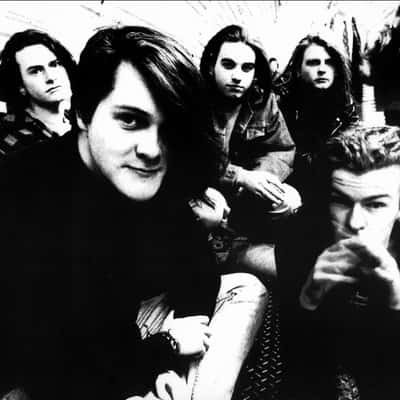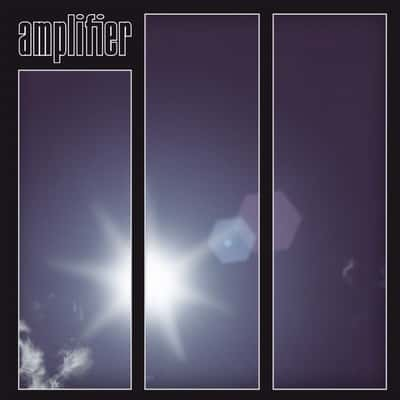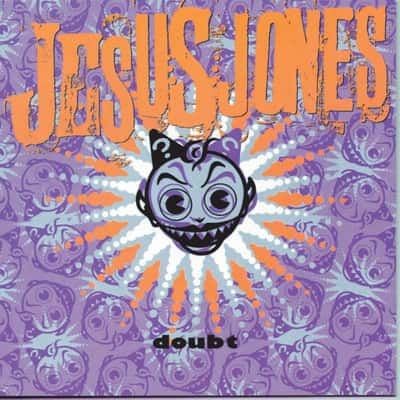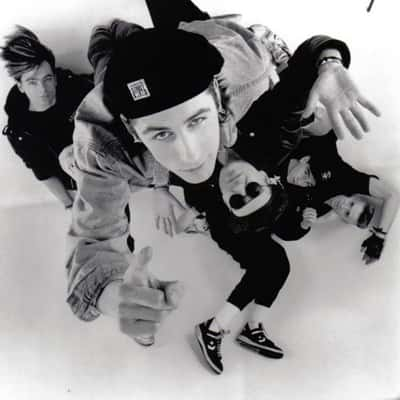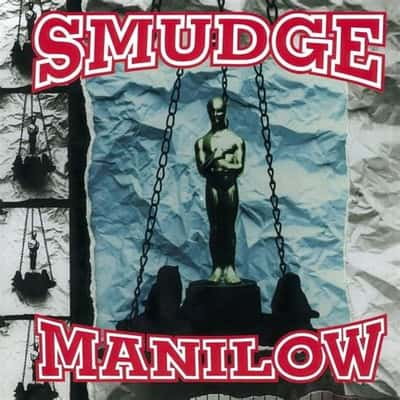
This Week’s Hits: Depeche Mode, Radiohead & More
Elvis Costello: A Look Into “The Best Of The First 10 Years” 🎸🎶
Welcome to our deep dive into one of the most intriguing compilation albums out there, “The Best Of The First 10 Years” by the incomparable Elvis Costello. Released in 2007, this album is a treasure trove for both new listeners and long-time fans, offering a snapshot of Costello’s prolific early career. 🌟
The Genesis of Genius 🌱
Elvis Costello, born Declan Patrick MacManus, has been a monumental figure in the music industry, known for his lyrical cleverness and eclectic musical style. This compilation beautifully encapsulates the first decade of his recording career, starting from 1977. Each track is a testament to his ability to blend genres - from punk to pop, and jazz to country, Costello does it all with unmatched flair.
A Closer Look at the Tracks 🎵
“The Best Of The First 10 Years” features some of Costello’s most iconic songs. Tracks like “Alison,” “Pump It Up,” and “Oliver’s Army” are just the tip of the iceberg. These songs not only showcase his versatility but also his evolution as a songwriter and musician over the years. The album serves as a perfect introduction to Costello’s vast and varied catalog, capturing pivotal moments from albums that have now become classics in the rock and pop canon.
Why This Compilation Stands Out 🌟
What makes this compilation stand out is its careful curation. It’s not merely a collection of hits, but a thoughtful selection that tells a story - the story of an artist’s growth and the exploration of different musical landscapes. For anyone looking to understand the essence of Elvis Costalary, this album serves as a compact masterclass in musical excellence.
Impact and Influence 💥
Elvis Costello’s influence on the music scene cannot be overstated. His songs have not only shaped the new wave genre but have also left an indelible mark on many artists across various musical spectrums. This compilation, while revisiting the past, continues to inspire current and future generations of musicians and songwriters.
Conclusion: A Musical Jewel 💎
“The Best Of The First 10 Years” is more than just a compilation; it’s a celebration of artistry and ingenuity. Whether you’re a longtime admirer or a curious newcomer, this album is a golden opportunity to experience the early work of a musical legend. So, turn up the volume, press play, and let Elvis Costello take you on a journey through the first decade of a career that is nothing short of legendary. 🎧🚀
In essence, this album not only celebrates the hits that defined Costello’s early years but also underscores his profound impact on music history. It’s a must-have for anyone who appreciates the art of songwriting and the power of storytelling through music.
Dive into the Synth-Pop Universe: Depeche Mode’s Greatest Hits 🎶🌌
Background on Depeche Mode 🎤
Depeche Mode, a band synonymous with the rise of synth-pop in the early 80s, has left an indelible mark on the music industry. Known for their deep, evocative soundscapes and profound lyrics, they’ve gathered a massive following over decades.
About the Album 📀
“The Best of Depeche Mode, Vol. 1 (Deluxe)” serves as a magnificent gateway into the world of Depeche Mode. Released in 2006, this compilation album features a selection of the band’s most iconic tracks, specially curated to give listeners both old and new a comprehensive view of their musical journey.
Track Highlights 🎵
The album kicks off with “Personal Jesus,” a track whose gritty riff and catchy chorus became anthemic upon its release. Another standout, “Enjoy the Silence,” epitomizes the band’s ability to blend melancholic melodies with introspective lyrics, creating a timeless track that resonates with audiences even today.
Deluxe Features 🌟
The deluxe edition of the album is particularly special, as it includes a DVD with several music videos, providing a visual treat that complements the auditory experience. These videos are not only entertaining but also provide insight into the artistic direction of the band throughout their career.
Reception and Impact 📈
Critically acclaimed, “The Best of Depeche Mode, Vol. 1” has been praised for its well-chosen tracklist that captures the essence of the band’s evolution. It’s a testament to their enduring appeal, showcasing how their music has stood the test of time.
Conclusion 🎶
For anyone looking to explore Depeche Mode’s discography, “The Best of Depeche Mode, Vol. 1 (Deluxe)” is an essential listen. It encapsulates the spirit of the band and serves as a perfect introduction to their rich, synth-driven universe. Whether you’re a long-time fan or a newcomer, this album promises to take you on an unforgettable musical journey. 🚀
In essence, this album is not just a collection of songs; it’s a narrative of artistic innovation and emotional depth, beautifully packaged in a deluxe edition that offers something extra for the devoted fans. Dive in and let Depeche Mode’s seminal sounds captivate your heart and mind.
Exploring “God Fodder” by Ned’s Atomic Dustbin 🎸🎶
Welcome to another deep dive into iconic albums, and this week we’re getting into the gritty exhilaration of “God Fodder,” the debut studio album by British rock band Ned’s Atomic Dustbin. Known for their unique dual-bass setup, the band carved a niche in the early ’90s alternative scene, and “God Fodder” is a testament to their innovative spirit.
Background and Release 📅
“God Fodder” was released in 1991, a time brimming with musical experimentation and emerging new genres. Ned’s Atomic Dustbin, hailing from Stourbridge, England, quickly made waves with their energetic performances and distinctive sound, characterized by the use of two bass players which added depth and complexity to their music.
Music and Lyrics 🎤
The album is a powerhouse of post-punk energy with catchy hooks and relentless rhythms. Tracks like “Kill Your Television” and “Grey Cell Green” are perfect examples of how the band combined catchy melodies with a driving, punk-infused beat. The lyrics, often reflective of youthful angst and societal observations, resonate with a sense of urgency and rebellion.
Critical Reception and Impact 🌟
Upon its release, “God Fodder” received positive reviews from critics who praised its vibrancy and originality. The album managed to break into the mainstream, charting in both the UK and the US, which was a significant achievement for a band with such an unconventional setup.
The impact of “God Fodder” was notable, as it helped to define a generation of music that straddled the line between punk rock and early alternative. It influenced a number of bands who admired the group’s ability to blend genres and maintain a palpable level of energy throughout their recordings.
Legacy and Influence 🎵
Decades later, “God Fodder” stands as a cult classic, cherished by fans who look back fondly on the early ’90s alternative rock scene. The album’s influence is evident in the music of later bands that embraced a similar ethos of combining rock elements with a punk attitude.
Conclusion 📜
“God Fodder” by Ned’s Atomic Dustbin is more than just an album; it’s a piece of musical history that encapsulates a specific moment in the British rock scene. From its dual-bass innovation to its energetic anthems, it remains a significant artifact that continues to inspire music fans and artists alike.
Whether you’re revisiting this classic or discovering it for the first time, “God Fodder” offers a unique listening experience that captures the spirit of an era. Its legacy is a testament to the enduring power of creativity and the impact of daring to be different in the music industry.
🎧 Give “God Fodder” a listen, and let the high-energy tunes and thought-provoking lyrics take you back to a pivotal time in music history. Enjoy the journey through one of the ’90s most memorable musical offerings! 🌌
This exploration of “God Fodder” is part of our ongoing series where we rediscover the albums that shaped the music landscape. Stay tuned for more musical adventures that revisit the classics and uncover the gems of the past.
- View Ned’s Atomic Dustbin on russ.fm
Exploring “Amplifier” by Amplifier 🎸🎶
Welcome to this week’s deep dive into the intriguing world of rock music, where we explore the self-titled debut studio album “Amplifier” by the British rock band Amplifier. Released in 2004, this album not only set the stage for their future musical endeavors but also carved a niche for them in the progressive rock scene.
Background 📚
Amplifier was formed in the early 2000s in Manchester, England. The band, consisting of Sel Balamir (guitar, vocals), Matt Brobin (drums), and Neil Mahony (bass), brought together their diverse influences to create a sound that’s both unique and profoundly engaging. Their self-titled debut is a culmination of their early experiments with sound and composition, showcasing their talent in blending heavy rock elements with progressive psychedelic sounds.
Album Overview 🎼
“Amplifier” features a mix of lengthy tracks that are rich in complex arrangements and lyrical depth. The album kicks off with “Motorhead,” a track that sets a robust tone with its heavy riffs and dynamic percussion. As we move through the album, tracks like “Airborne” and “Panzer” display the band’s flair for creating atmospheric layers with guitars and effects.
One of the standout tracks, “The Consultancy,” is beloved for its philosophical lyrics and intricate guitar work. This song, like many others on the album, showcases Amplifier’s ability to weave thought-provoking themes with compelling musicality.
Production and Reception 🌟
The production of “Amplifier” by Amplifier reflects a DIY ethos. Recorded and produced by the band members themselves, the album captures a raw, authentic sound that fans of rock and progressive music appreciate deeply. Despite being a debut album, it received acclaim for its ambitious sound and the maturity of its content. Critics and fans alike praised the band for not shying away from complex compositions and for their willingness to push musical boundaries.
Legacy and Influence 🎸
Over the years, “Amplifier” has grown to be regarded as a cult classic in progressive rock circles. It laid a strong foundation for the band’s career, influencing their subsequent albums and helping them maintain a loyal fan base. The album’s success proved that there is still a fervent appetite for well-crafted, thought-provoking rock music.
Conclusion 📝
“Amplifier” by Amplifier remains a significant album because it represents a fearless entry into the music industry by a band that was not afraid to be different. For those who appreciate music that combines the raw energy of rock with the complexity of progressive elements, this album is a must-listen. It not only entertains but also challenges the listener to engage deeply with both the music and the lyrics.
Join me next week as we uncover another hidden gem in the music world. Until then, keep your music passion alive, and let “Amplifier” amplify your love for rock and roll! 🎧🤘
This exploration into “Amplifier” by Amplifier reflects the album’s enduring appeal and its ability to resonate with listeners who seek depth and innovation in music.
- View Amplifier on russ.fm
Exploring the Depths of Depeche Mode’s “Music for the Masses” 🎶
Introduction to the Album 🌟
Depeche Mode’s “Music for the Masses,” released on September 28, 1987, stands as a pivotal album in the band’s storied career. This album marked a significant transition towards a denser, more melancholic sound that would become a staple in their subsequent works.
The Making of a Masterpiece 🎧
“Music for the Masses” was produced by Depeche Mode alongside David Bascombe, who played a crucial role in shaping the album’s sound. Recorded in various studios across Europe, including Berlin’s famed Hansa Studios, the album’s production was influenced heavily by the Cold War’s cultural backdrop, lending an air of somberness and introspection.
Key Tracks and Themes 🔑
The album opens with “Never Let Me Down Again,” a track that combines a pulsing beat with lyrics expressing themes of trust and betrayal, setting the tone for the album’s emotional depth. “Strangelove” is another standout track, where love is portrayed in a complex and often torturous light. The song “Behind the Wheel” offers a rhythmic journey through themes of control and submission, while “Little 15” tells a story of lost innocence and longing with its haunting melodies.
Artistic Innovations and Sound Design 🎚️
“Music for the Masses” showcases Depeche Mode’s innovative use of the synthesizer, sampling, and electronic beats, which were groundbreaking at the time. The album’s sound design includes a mix of minimalistic beats, atmospheric pads, and sharp, catchy melodies that create a rich, immersive listening experience.
Reception and Legacy 📈
Upon its release, “Music for the Masses” received critical acclaim and achieved significant commercial success, reaching the Top 10 in several countries. It played a crucial role in solidifying Depeche Mode’s status as one of the leading bands in the electronic music scene of the 1980s.
The album’s influence is evident in its enduring popularity and the way it paved the road for future electronic music. Tracks from “Music for the Masses” continue to be staples in Depeache Mode’s live performances, resonating with new generations of fans.
The Tour That Broke Boundaries 🌍
The accompanying tour, “Music for the Masses Tour,” was a monumental success, culminating in the iconic concert at the Pasadena Rose Bowl in 1988. This concert was attended by over 60,000 fans and was documented in the film “101,” which not only captured the live experience but also highlighted the band’s impact on the music industry and their fans worldwide.
Conclusion: A Lasting Impact on Music 🏅
Depeche Mode’s “Music for the Masses” is more than just an album; it’s a pivotal moment in music history that continues to influence and inspire. Its blend of emotional depth, innovative soundscapes, and compelling themes makes it a timeless piece that remains relevant in today’s musical landscape.
As we revisit “Music for the Masses,” it’s clear that Depeche Mode didn’t just create music for their time; they created music that transcends time, touching the hearts of listeners across decades. 🎵🖤
Exploring the Cosmic Charm: The B-52’s ‘Cosmic Thing’ 🌌🎶
The B-52’s, a band synonymous with quirky energy and distinctive style, released their fifth studio album, ‘Cosmic Thing’, in 1989. This album not only marked a significant turning point in their career but also became a pivotal moment in the landscape of late 80s pop and rock music. 🎸
The Resurgence 🌟
Post a period of tragedy and uncertainty following the death of guitarist Ricky Wilson in 1985, ‘Cosmic Thing’ represented a triumphant and vibrant comeback for the band. With production helmed by Nile Rodgers (known for his work with Chic and David Bowie) and Don Was (noted for his work with Bonnie Raitt), the album infused new vitality into the band’s sound.
Track Breakdown 🎵
The album opens with the electrifying “Cosmic Thing,” setting the tone with its catchy hooks and infectious rhythms. However, it is the tracks “Love Shack” and “Roam” that stand out as the jewels in the crown. “Love Shack,” a riotous party anthem, became a global hit, reaching the top of charts worldwide and earning a place in the annals of pop music history. 🏠💃 “Roam,” a mellower tune, offered a contrast with its soothing melody and reflective lyrics about wanderlust and freedom, capturing the hearts of many.
Lyrical Themes & Style 📜
Lyrically, ‘Cosic Thing’ explores themes of love, adventure, and personal freedom, encapsulating the spirit of the late 1980s with a sense of optimism and celebration. The album’s style also marked a departure from the darker and more experimental tones of their previous work, embracing a more mainstream pop-rock sound that resonated with a wider audience.
Critical Reception & Legacy 🏆
Critically acclaimed, ‘Cosmic Thing’ climbed to the top of the charts, firmly establishing The B-52’s as a mainstream pop act. It was a commercial success, certified multi-platinum in several countries, and its success propelled the band to new heights of fame. The album’s impact extended beyond just commercial success; it influenced a generation of pop and rock musicians and remains a significant cultural artifact from the late 20th century.
Tour & Performances 🎤
The tour following the album release saw The B-52’s performing to packed venues across the globe. Their live performances, characterized by the band’s energy, colorful aesthetics, and engaging stage presence, helped cement their reputation as a must-see live act.
Conclusion 🌈
Today, ‘Cosmic Thing’ stands as a testament to The B-52’s resilience and creativity. It remains a beloved classic, celebrated for its joyous vibe and timeless tracks. For both old fans and new listeners, ‘Cosmic Thing’ offers a delightful auditory journey into the heart of late 80s pop culture, filled with danceable beats, catchy lyrics, and the unmistakable flair of The B-52’s. 🎉
In revisiting ‘Cosmic Thing’, we not only uncover the layers of a pivotal music era but also reconnect with the universal themes of joy, resilience, and the enduring power of a good melody. So, let’s put on our dancing shoes, hit play, and let The B-52’s take us on a trip down memory lane, back to the cosmic vibe of the 80s! 🕺🌐
Exploring the Impact and Vibrancy of “Doubt” by Jesus Jones 🎶🌟
Introduction to “Doubt”
Released in 1991, “Doubt” is the critically acclaimed album by British alternative rock band Jesus Jones. This album stands as a monumental release of the early ’90s, capturing the essence of the techno-rock fusion that defined much of the era’s musical innovation.
Signature Sound and Production 🎧
“Doubout” is renowned for its unique blend of rock and electronic music, featuring a heavy use of synthesizers alongside traditional rock instruments. This combination not only set the album apart from its contemporaries but also marked it as a pioneer in integrating these genres. The production, handled adeptly by the band, emphasizes a crisp, forward-thinking sound that resonates with energetic vibes and a futuristic outlook.
Key Tracks
The album houses some of the band’s most famous tracks, including the hit single “Right Here, Right Now.” This song became a defining anthem of the ’90s, celebrated for its upbeat rhythm and optimistic lyrics that reflect the post-Cold War cultural milieu. Other notable tracks include “Real, Real, Real” and “International Bright Young Thing,” both of which enjoyed significant chart success and contributed to the album’s global appeal.
Themes and Lyrics 📜
Lyrically, “Doubt” delves into themes of global consciousness and the rapid changes in the socio-political landscape at the time. The album’s lyrical content offers a mix of introspection and commentary on external realities, providing a thoughtful backdrop to its rhythmic and melodic exuberance.
Reception and Legacy
Upon its release, “Doubt” received widespread acclaim from music critics and fans alike. It achieved impressive commercial success, bolstered by its chart-topping singles. The album not only elevated Jesus Jones’ profile on the international music scene but also earned them several awards and nominations, further cementing its status in the rock and electronic music domains.
The legacy of “Doubt” is evident in its lasting influence on the genres of rock and electronic music. It inspired a wave of bands to experiment with similar sounds, and its tracks continue to be celebrated for their innovative approach and timeless appeal.
Conclusion 🌍
“Doubout” by Jesus Jones remains a pivotal album that encapsulates the spirit of its time while continuing to inspire musicians and music lovers around the world. Its blend of energetic beats, thoughtful lyrics, and groundbreaking production makes it a classic, emblematic of a moment when musical boundaries were pushed, and new horizons were explored.
This exploration into “Doubt” reflects not just on a musical masterpiece but also on a cultural artifact that captured, influenced, and defined an era. Fans of music history and aficionados of the ’90s music scene will find in “Doubt” a perfect snapshot of musical innovation and cultural relevance.
🎶 Whether you’re revisiting this album or discovering it for the first time, “Doubt” by Jesus Jones offers a compelling journey into a dynamic period of music history, filled with the spirit of innovation and the pulse of change.
- View Jesus Jones on russ.fm
Bill Withers: A Night at Carnegie Hall 🎤🎶
On a crisp evening in October 1972, the soulful echoes of Bill Withers filled the prestigious Carnegie Hall in New York City. The live album, “Bill Withers Live At Carnegie Hall,” recorded during this concert, is heralded as one of the most poignant live performances in the history of soul music.
The Magic of Live Performance ✨
Bill Withers, known for his deep, powerful voice and introspective songwriting, delivered a performance that was both raw and intimate. The album opens with the warm applause of an audience, eagerly anticipating the soulful journey Bill was about to take them on. As the concert unfolds, Bill’s interaction with the crowd becomes a highlight; his banter is heartfelt, adding a personal touch that makes the listening experience even more engaging.
Track Highlights 🎵
The setlist of the night was a perfect blend of Bill’s major hits and some less-known gems. Songs like “Ain’t No Sunshine” and “Lean on Me” were performed with such emotion and depth that they left the audience spellbound. However, it was perhaps the renditions of “Grandma’s Hands” and “Use Me” that stood out, showcasing his unique ability to blend storytelling with melody.
“Hope She’ll Be Happier” is another standout track, where Bill explores the themes of love and loss with aching sincerity. The rawness of his voice coupled with the simplicity of the arrangement creates a poignant musical moment that is often cited as a highlight of his live performances.
Critical Acclaim and Legacy 🌟
“Live At Carnegie Hall” has been praised by critics and fans alike for its authentic portrayal of a Bill Withers concert experience. The album is often noted for its exceptional audio quality, which captures the vibrancy of a live performance without losing the nuances of Bill’s voice or the intimacy of his storytelling.
The album not only cemented Bill Withers’ status as a powerful live performer but also showcased his skills as a songwriter who could convey complex emotions with simple, relatable lyrics. It remains a critical piece of the soul and R&B music canon, celebrated for its emotional depth and timeless appeal.
The Impact on Music and Culture 🎉
Bill Withers’ performance at Carnegie Hall in 1972 did more than just produce a great live album; it influenced generations of musicians and songwriters. His ability to connect with the audience through genuine storytelling and emotional delivery has been a guiding light for many artists in the realms of soul, R&B, and beyond.
In a musical landscape filled with dazzling productions and elaborate stage setups, “Bill Withers Live At Carnegie Hall” stands out for its simplicity and sincerity. It is a testament to the enduring power of great songs delivered by a truly gifted artist.
Conclusion 📜
“Bill Withers Live At Carnegie Hall” is not just an album; it’s a historical musical journey that captures the essence of one of the greatest soul musicians of all time. For those who appreciate the raw, undiluted spirit of live performances, this album is a treasure trove of musical gold. It invites listeners to experience the warmth and soul of Bill Withers, making them feel like they are right there in Carnegie Hall, swaying to the rhythms of his timeless melodies.
As we continue to celebrate the legacy of Bill Withers, “Live At Carnegie Hall” remains a vital part of his musical legacy, reminding us of the power of music to connect, heal, and inspire. 🎶👏
Exploring the Depths of Radiohead’s “Kid A” 🎶👾
In the landscape of modern music, few albums have stirred as much curiosity and analysis as Radiohead’s fourth studio album, “Kid A,” released in October 2000. This record marked a radical departure from the band’s earlier rock-oriented sound, venturing into the realms of electronic music, experimental ambient, and jazz influences. As we dive into this album, we uncover the layers that make it a masterpiece of the 21st century.
The Genesis of “Kid A” 🌌
After the overwhelming success of their 1997 album “OK Computer,” Radiohead found themselves grappling with fame and the pressures of expectation. This tumultuous period led them to take a bold step away from their established sound. “Kid A” was born out of a desire to redefine their musical identity, with lead vocalist Thom Yorke and the band embracing synthesizers, drum machines, and the ondes Martenot, an early electronic musical instrument.
Breaking Musical Conventions 🛠️
“Kid A” is an album that resists the traditional structures of rock music. Songs like “Everything in Its Right Place” open with haunting keyboard notes and distorted vocals, setting the tone for an album that challenges and captivates. The title track, “Kid A,” uses a blend of electronic elements and cryptic lyrics to create a sense of disorientation and allure.
Radiohead’s use of unconventional song structures and ambient soundscapes in tracks such as “How to Disappear Completely” and “Motion Picture Soundtrack” highlights their shift from mainstream appeal to avant-garde exploration. The album’s production, led by Nigel Godrich, plays a critical role in crafting its unique sound, characterized by layers of texture and a stark departure from pop norms.
Lyrical Themes and Artistic Vision 🎨
Lyrically, “Kid A” delves into themes of alienation, dystopia, and personal struggle. Thom Yorke’s lyrics are deliberately oblique, often forgoing traditional narrative for fragmented images and emotional resonance. This cryptic nature invites listeners to derive their own meanings and connections, making each listening experience profoundly personal.
The album’s artwork, created by Stanley Donwood and Yorke, complements its themes perfectly. It features apocalyptic landscapes and abstract figures, mirroring the music’s atmospheric and enigmatic qualities.
Critical Reception and Legacy 🌟
Upon its release, “Kid A” received a polarized response from critics and fans, with some initially baffled by its experimental approach. However, it quickly rose to acclaim, topping charts worldwide and earning a Grammy Award for Best Alternative Music Album. Over time, “Kid A” has been recognized as a landmark album in the digital age, influencing countless artists across various genres.
Conclusion: A Lasting Impact on Music 🚀
“Kid A” stands as a testament to Radiohead’s artistic courage and their ability to evolve musically. It not only redefined what a rock band could do but also expanded the boundaries of popular music. As we reflect on its impact over two decades later, “Kid A” continues to resonate as a profound statement on modernity and the human condition.
Radiohead’s daring dive into the unknown with “Kid A” has left an indelible mark on the landscape of music, making it a pivotal moment in the band’s legacy and a touchstone for experimental music. It’s an album that refuses to fade into the background, demanding attention and respect for its bold artistic vision and intricate soundscapes. 🎧💡
This exploration into “Kid A” reveals an album rich in complexity and innovation. It’s a journey through sound and emotion that captures the essence of a band at a pivotal moment of transformation, and it remains as relevant today as it was at the dawn of the new millennium.
The Timeless Impact of Blondie’s “Parallel Lines” 🎵
Released in 1978, Blondie’s “Parallel Lines” emerged as a groundbreaking blend of punk, disco, and pop that would etch its mark on the music industry forever. The album, remastered to enhance audio fidelity, allows us to experience the vibrant energy and innovative spirit of Blondie with even greater clarity and intensity.
A Fusion of Musical Genres 🎸🕺
“Parallel Lines” is a testament to Blondie’s versatility and their ability to transcend musical boundaries. Led by the charismatic Debbie Harry, the album features a diverse range of sounds that seamlessly blend rock, punk, disco, and pop. This eclectic mix not only showcases the band’s musical prowess but also highlights their role in the evolution of new wave music.
Iconic Tracks and Chart-Topping Hits 📈
The album is home to some of Blondie’s most iconic tracks, including the infectious “Heart of Glass,” which topped the charts in several countries and brought disco into the punk mix. Other notable hits like “Hanging on the Telephone” and “One Way or Another” exhibit the band’s rock roots and punk attitude, making them staples on rock radio and in the playlists of music enthusiasts around the globe.
The Remastered Experience 🎧
The remastered version of “Parallel Lines” brings out the subtleties in the album’s production. Listeners can appreciate the crispness of Clem Burke’s dynamic drumming, the richness of James Destri’s keyboard layers, and the raw power of Debbie Harry’s vocals with renewed appreciation. The remastering process respects the original recordings while enhancing the overall listening experience, making it a must-have for both new listeners and longtime fans.
Cultural and Fashion Influence 👗🌟
Beyond its musical impact, “Parallel Lines” also played a significant role in fashion and pop culture. Debbie Harry’s style became iconic, influencing fashion trends and redefining rock chic. The album cover itself, featuring the band in a simple, striking black and white ensemble, is considered one of the most memorable and stylish in rock history.
Legacy and Influence 🌍
Decades later, the influence of “Parallel Lines” on pop and rock music is unmistakable. It paved the way for the acceptance of more experimental music in mainstream pop and inspired a generation of musicians and bands that followed. The album’s success also helped propel Blondie from cult New York City band status to international stardom.
Conclusion 🌟
“Parallel Lines (Remastered)” is not just an album; it’s a piece of music history that continues to resonate with audiences today. Its remastered version is a celebration of Blondie’s legacy, offering both a nostalgic trip for those who experienced its initial release and a gateway into the band’s revolutionary sound for new fans. As we revisit this classic album, it’s clear that Blondie’s lines not only run parallel but continue to intersect with the ever-evolving music landscape.
This album is a must-listen for anyone interested in the roots of modern pop and rock music, as well as for those who appreciate the art of music production. Blondie’s “Parallel Lines” stands as a beacon of innovation and style, proving that great music truly is timeless. 🎶✨
🎵 Waiting by Fun Boy Three 🎵
🌟 Overview
“Waiting” is the second and final album by the British band Fun Boy Three, released in 1983. The band, consisting of Terry Hall, Neville Staple, and Lynval Golding, spun out of the ska revival band The Specials, bringing a more mature and evolved sound to this project.
🎤 Style and Influence
The album is well-known for its eclectic mix of musical styles, blending elements of new wave, ska, and pop. “Waiting” showcases the band’s knack for catchy hooks and sharp lyrics, wrapped in a somewhat moody and introspective atmosphere. This album marked a significant evolution from their debut, presenting a more polished and sophisticated sound.
🎼 Key Tracks
Some of the standout tracks from the album include “The Tunnel of Love,” which features haunting melodies and reflective lyrics, and “Our Lips Are Sealed,” a collaboration with the American band The Go-Go’s. Another notable track is “The More I See (The Less I Believe),” known for its poignant lyrics and compelling rhythm.
📀 Production and Collaborations
“Waiting” was produced by David Byrne of Talking Heads, which added a layer of avant-garde aesthetic to the album. Byrne’s influence is evident in the rhythmic complexity and the overall experimental edge of the album. The collaboration was a significant highlight, bringing together different musical sensibilities that enriched the album’s sound.
🌍 Reception and Legacy
Upon its release, “Waiting” received positive reviews from critics who praised its inventive sound and mature songwriting. The album managed to chart in the UK and solidified Fun Boy Three’s position in the new wave scene of the early ’80s. Although the band disbanded shortly after the album’s release, “Waiting” remains a significant part of the new wave era, remembered for its originality and artistic depth.
🖋 Conclusion
“Waiting” by Fun Boy Third stands as a testament to the band’s brief but impactful contribution to music. It captures a moment of artistic growth and experimentation, which continues to resonate with fans of the genre. The album’s blend of styles, coupled with thoughtful production and meaningful collaborations, makes it a noteworthy listen for those exploring the evolution of new wave and pop in the early ’80s.
🎧 Whether you’re a longtime fan or new to their music, “Waiting” offers a fascinating glimpse into the creative energies of one of the early ’80s most intriguing bands.
Exploring the Sonic Landscape of “Manilow by Smudge” 🎵
Welcome to this week’s deep dive into one of the more intriguing corners of the indie music scene: “Manilow” by Smudge. This album, which has captivated a niche audience, offers a unique blend of lo-fi production, heartfelt lyrics, and an unmistakable garage band charm.
Background 🎤
“Manilow” is the debut album by Australian indie rock band Smudge, released in 1994. Smudge was formed in Sydney and is often associated with the 1990s indie rock movement in Australia. The band’s lineup consists of Tom Morgan on guitar and vocals, Alison Galloway on drums, and Paul “Duncs” Duncan on bass. Tom Morgan, perhaps better known for his collaboration with Evan Dando of The Lemonheads, brings a distinctly raw but melodious quality to Smudge’s music.
Musical Style and Influences 🎸
The album “Manilow” is characterized by its stripped-down aesthetic and straightforward approach to music-making. Influenced by punk rock’s DIY ethos and the indie pop sensibilities of the 1980s, Smudge crafts songs that are both catchy and emotionally resonant. The guitar work is simple yet effective, with Morgan’s vocal delivery providing a perfect counterbalance to the often sardonic lyrics.
Standout Tracks 🌟
One of the key tracks, “Don’t Want To Be Grant McLennan,” pays homage to the co-founder of the Go-Betweens, showcasing Smudge’s ability to blend pop culture references with personal storytelling. The song is a highlight of the album, combining witty lyrics with a memorable melody that sticks with you long after the song ends.
“Ingrown” is another standout track, where the band’s grungy influences shine through. The heavier guitar riffs and energetic drumming make it one of the more robust numbers on the album.
Critical Reception and Legacy 📜
“Manilow” received mixed reviews upon its release. While some critics praised the album’s honest and unpolished charm, others found it too rough around the edges. However, over the years, “Manilow” has grown in stature and is now considered a cult classic within the Australian indie music scene. It’s appreciated not just for its musicality but also for its ability to capture a specific time and place in the Australian music landscape.
Conclusion 🎶
“Manilow” by Smudge is more than just an album; it’s a statement on the power of authenticity in music. In a world where production can often overshadow substance, Smudge reminds us that there is beauty in simplicity. Whether you’re a long-time fan of the indie genre or a newcomer, “Manilow” offers a refreshing take on what music can be when stripped of pretense.
As we continue to explore diverse musical landscapes, albums like “Manilow” remind us why we fell in love with music in the first place. It’s raw, it’s real, and it resonates. So, give “Manilow” a listen, and let Smudge take you on a journey back to the roots of indie rock.
Join me next week as we unearth more hidden gems from the music world! 🌍🎧
Top Artists (Week 27)
- Depeche Mode (30 plays)
- Elvis Costello & The Attractions (17 plays)
- Ned’s Atomic Dustbin (13 plays)
- Amplifier (11 plays)
- The B-52’s (10 plays)
- Jesus Jones (9 plays)
- Bill Withers (7 plays)
- Radiohead (6 plays)
- Elvis Costello (5 plays)
- Blondie (1 plays)
- Fun Boy Three (1 plays)
- Smudge (1 plays)
Top Albums (Week 27)
- The Best Of The First 10 Years by Elvis Costello
- The Best of Depeche Mode, Vol. 1 (Deluxe) by Depeche Mode
- God Fodder by Ned’s Atomic Dustbin
- Amplifier by Amplifier
- Music for the Masses by Depeche Mode
- Cosmic Thing by The B-52’s
- Doubt by Jesus Jones
- Bill Withers Live At Carnegie Hall by Bill Withers
- Kid A by Radiohead
- Parallel Lines (Remastered) by Blondie
- Waiting by Fun Boy Three
- Manilow by Smudge

